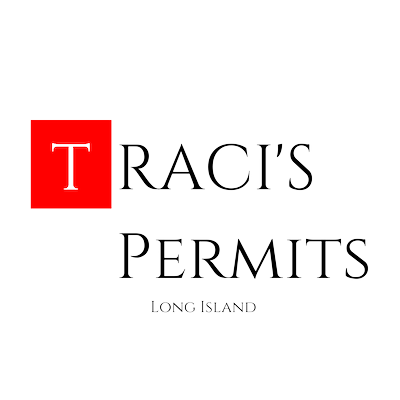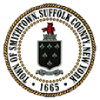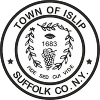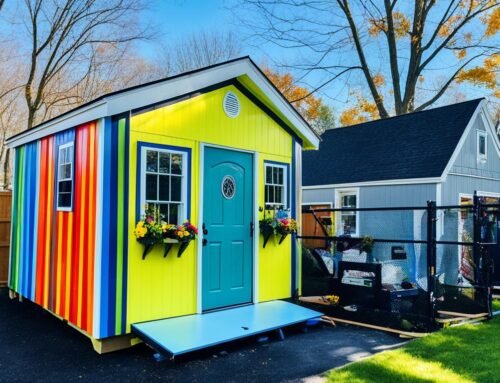Get building permits, variances, maps & COs quickly on Long Island! Call 631-492-0927 for fast service at TracisPermits.com.
In a recent case, the Zoning Board of Appeals of the Town of Southampton granted a use variance to establish a Montessori private preprimary and elementary school for profit in Shinnecock Hills. The decision clarified the importance of understanding and complying with building permits and variances in the area. Whether you’re a builder, property owner, or developer, navigating the construction process in Shinnecock Hills requires knowledge of zoning regulations, land development, and building code compliance.
Key Takeaways:
- Building permits, variances, radius maps, and Certificate of Occupancy are essential in Shinnecock Hills.
- Obtaining the necessary permits and following proper procedures is crucial for a successful construction project.
- Compliance with approved plans and building code regulations is necessary to avoid penalties and delays.
- Understanding variances and radius maps helps navigate zoning regulations and obtain building permits.
- A Certificate of Occupancy ensures a building is safe for occupancy and meets health and safety standards.
Obtaining Building Permits in Shinnecock Hills
When embarking on a construction project in Shinnecock Hills, it is essential to understand the process of obtaining building permits. These permits are necessary for all construction activities, including new buildings, additions, renovations, and demolitions. By following the proper procedures and adhering to zoning regulations and land development requirements, builders can ensure a smooth and compliant construction process.
The first step in obtaining building permits is to submit detailed construction plans and site surveys to the relevant authorities. These plans should outline the proposed structure and its compliance with building code regulations. Additionally, applicants must pay the required fees associated with the permit application.
Once the application is submitted, the Chief Building Inspector reviews the plans to ensure compliance with the building code. This includes verifying structural integrity, fire safety measures, and adherence to zoning regulations. If the plans meet the requirements, the permit is granted, allowing construction to commence.
| Steps for Obtaining Building Permits in Shinnecock Hills |
|---|
| 1. Prepare detailed construction plans and site surveys |
| 2. Submit plans and pay the required fees |
| 3. Chief Building Inspector reviews plans for compliance |
| 4. Permit is granted if plans meet requirements |
Throughout the construction process, building inspections are conducted to ensure that the work aligns with the approved plans and building code regulations. These inspections occur at various stages, such as foundation, framing, plumbing, electrical, and final inspections. By passing these inspections, builders demonstrate their compliance with building code requirements and ensure the safety and integrity of the structure.
Obtaining building permits in Shinnecock Hills is crucial for a successful construction project. It ensures compliance with zoning regulations, land development requirements, and building code standards. By following the proper procedures and obtaining the necessary permits, builders contribute to the safe and responsible development of Shinnecock Hills.
Understanding Variances and Radius Maps in Shinnecock Hills
Variances and radius maps are crucial components of the land development process in Shinnecock Hills. Variances, granted by the Zoning Board of Appeals, allow for modifications to zoning regulations when complying with the strict letter of the ordinance is impractical or causes unnecessary hardship. These variances play a significant role in accommodating unique circumstances and ensuring a fair and reasonable approach to land use.
Radius maps, on the other hand, define specific areas or zones within Shinnecock Hills where particular regulations may apply. These maps help determine setback requirements, building heights, and permissible land uses, providing clarity and guidance for developers and property owners. Understanding variances and radius maps is essential to navigate the intricacies of the zoning regulations and make informed decisions when seeking building permits.
To illustrate the importance of understanding variances and radius maps, let’s consider an example. Suppose a developer wishes to construct a building in Shinnecock Hills that slightly exceeds the maximum height requirement imposed by the zoning ordinance. In such a case, the developer may seek a variance from the Zoning Board of Appeals to allow for the higher building height. By understanding the parameters set by the radius map and the criteria for granting variances, the developer can navigate the process effectively and ensure compliance with the town’s regulations.
Table: Examples of Variances and Radius Map Provisions in Shinnecock Hills
| Variances | Radius Map Provisions |
|---|---|
| Allowing a higher building height | Defining setback requirements for waterfront properties |
| Permitting a non-residential use in a residential zone | Determining permissible land uses in a commercial district |
| Waiving off-street parking requirements | Establishing building envelope limits in a historic district |
As the table above demonstrates, variances and radius maps address a range of land development situations and ensure that development aligns with the town’s zoning regulations. Developers, property owners, and applicants for building permits must familiarize themselves with these provisions to navigate the process successfully and avoid potential complications or delays.
Importance of Certificate of Occupancy in Shinnecock Hills
The Certificate of Occupancy is a crucial document in Shinnecock Hills that certifies a building’s compliance with approved plans and building code regulations. This certificate, issued by the Chief Building Inspector, signifies that the building is safe for occupancy and meets necessary standards for health and safety. Obtaining a Certificate of Occupancy is essential before using or occupying a building to avoid legal and safety issues.
Building inspections play a significant role in the process of obtaining a Certificate of Occupancy. The Chief Building Inspector conducts a final inspection after all necessary building inspections have been passed. This inspection ensures that the construction project adheres to the approved plans and building code regulations. Compliance with the building code is essential to safeguard the occupants and ensure the structural integrity of the building.
“The Certificate of Occupancy is a crucial document that certifies a building’s compliance with approved plans and building code regulations.”
Having a valid Certificate of Occupancy is not only important for legal compliance but also for insurance and financing purposes. Insurance companies often require a Certificate of Occupancy before providing coverage for a property. Additionally, lenders may require this certificate to verify that the property meets all necessary building standards, ensuring a safe investment.
For builders and property owners in Shinnecock Hills, obtaining a Certificate of Occupancy is an essential step in the construction process. It is vital to work closely with the Chief Building Inspector, adhere to building code regulations, and complete the necessary building inspections to ensure compliance. By obtaining a Certificate of Occupancy, builders and property owners contribute to the safe and sustainable development of Shinnecock Hills.
| Benefits of a Certificate of Occupancy in Shinnecock Hills | Importance |
|---|---|
| Ensures compliance with approved plans and building code regulations | ✓ |
| Verifies the safety of the building for occupation | ✓ |
| Required by insurance companies for coverage | ✓ |
| Ensures the property meets necessary building standards for financing | ✓ |
Conclusion
Building permits, variances, radius maps, and Certificate of Occupancy are crucial elements in the construction process in Shinnecock Hills. Compliance with the town’s zoning regulations, land development requirements, and building code is essential for a successful project. By obtaining the necessary permits and adhering to the approved plans and building code regulations, builders and property owners contribute to the safe and sustainable development of Shinnecock Hills.
Understanding and navigating the complexities of the permitting process can be challenging. That’s why seeking the expertise of professionals like TracisPermits.com is highly recommended. Their team can provide guidance and assistance throughout the process, ensuring a smooth and efficient experience.
Whether you need building permits, variances, radius maps, or a Certificate of Occupancy, TracisPermits.com is here to help. With their fast and reliable service, you can get the necessary approvals quickly and efficiently. Contact TracisPermits.com at 631-492-0927 to ensure a streamlined construction process in Shinnecock Hills.
FAQ
What is the process of obtaining building permits in Shinnecock Hills?
The process involves compliance with the town’s zoning regulations and land development requirements. Applicants must submit detailed construction plans, site surveys, and pay the necessary fees. The Chief Building Inspector reviews the applications and ensures they meet the requirements of the building code. Building inspections are conducted at various stages of the construction process to ensure compliance with the approved plans and building code regulations.
When are variances granted in Shinnecock Hills?
Variances are granted by the Zoning Board of Appeals when there are practical difficulties or unnecessary hardships in complying with the strict letter of the zoning ordinance. These variances allow for modifications or variations to the regulations or provisions of the ordinance.
What are radius maps used for in Shinnecock Hills?
Radius maps define certain areas or zones within the town where specific regulations may apply. They help determine setback requirements, building heights, and permissible land uses.
What is a Certificate of Occupancy in Shinnecock Hills?
A Certificate of Occupancy is a crucial document that certifies that a building or structure complies with the approved plans and building code regulations. It is issued by the Chief Building Inspector after a final inspection is conducted and all necessary building inspections are passed.
Why is understanding and complying with building permits important in Shinnecock Hills?
Understanding and complying with building permits, variances, radius maps, and the Certificate of Occupancy are crucial for a successful construction project. By adhering to these regulations and obtaining the required permits, builders and property owners contribute to the safe and sustainable development of Shinnecock Hills.












